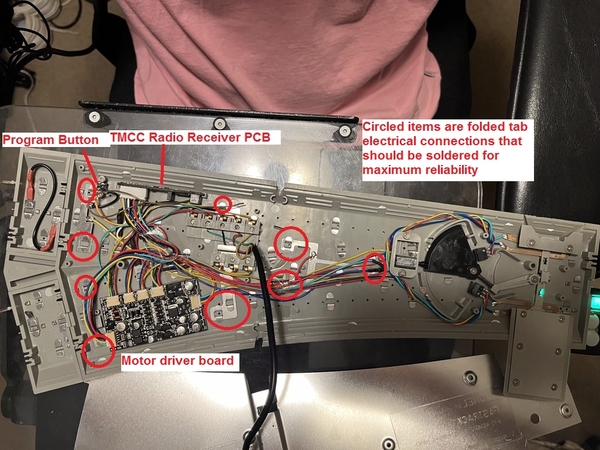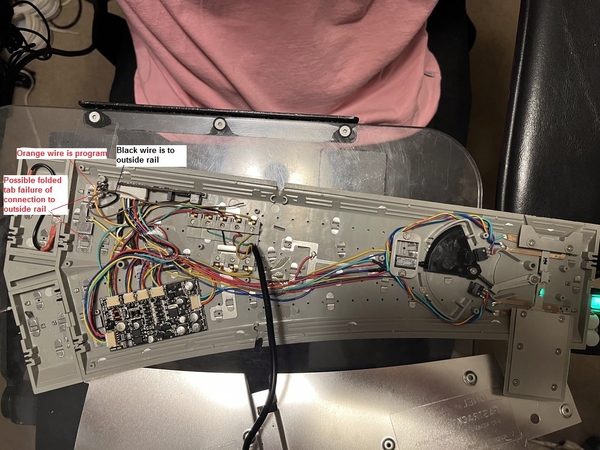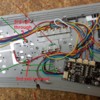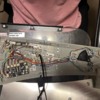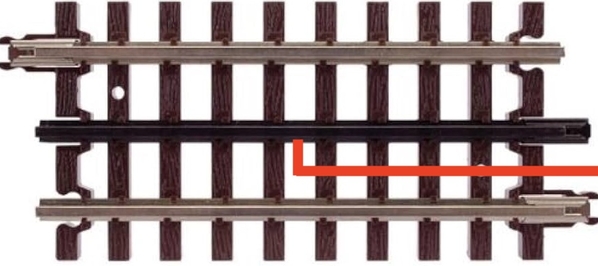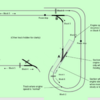Thanks to DavidNJ's suggestion, I repeated my prior testing and extended it in order to find the exact point at which the engine dies in the problem section of track.
When Engine Is Moving Slowly
To replicate the test I did before the initial post, I ran the engine through the problem section of track (Block 5 in the diagram below) moving slowly (what I remember of freight train speed), both clockwise and counterclockwise on the layout.
Moving clockwise -- As soon as the engine enters Block 5, and before reaching the switch marked A below, the engine slows down somewhat but does not stop yet. Track voltage right behind the engine was 13.6v. In Block 6 just before Block 5, the voltage was 15.8v. When the engine moves over the switch heading straight out of it, however, it comes to a halt and immediately shuts down, with no power, sound, or lights.
Moving counterclockwise – The engine moves normally all the way through the switch marked B. When it reaches the curve after switch B, the engine slows down but does not stop. When the nose of the engine is over the switch, the engine comes to a halt and immediate shuts down, no power, lights or sound.
When Engine Is Moving Briskly
Moving clockwise -- Next I repeated the test procedure with the engine moving “briskly,” but not breakneck speed. Starting in Block 6 and moving clockwise, as it crosses into Block 5, the engine slows down but doesn’t stop. Just before entering switch A, it starts to run jerkily, but the engine doesn’t die – it just continues all the way through the switch A at the reduced speed. After leaving switch A and approaching the curve leading to switch B, it picks up speed and resumes its original speed before entering Block 5 and everywhere else on the layout.
Moving counterclockwise – Here the engine is moving briskly as it crosses straight through switch B. As it approaches the curve after switch B and before switch A, it slows down somewhat, but it still proceeds through the switch without stopping. It moves at the slower speed until it reaches Block 6, at which point it resumes its previous brisk speed.
All the above occur when the engine is heading straight out of switch A. If the engine is taking the left turnout direction from switch A, it does not stop over the switch, at either speed. It only dies when moving slowly and heading straight out of switch A.
Attached is a layout schematic showing the problem area in Block 5.




